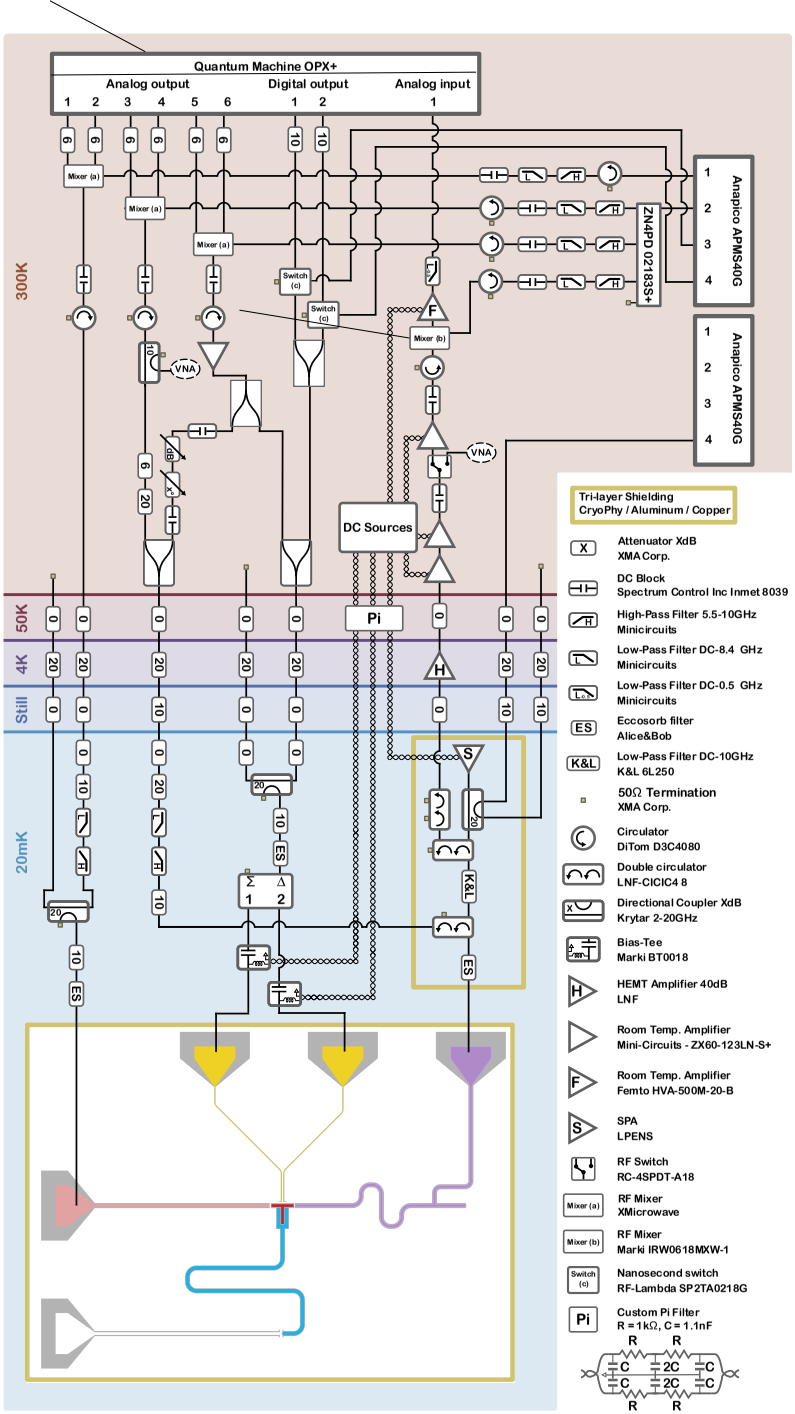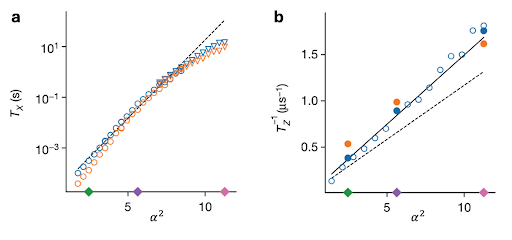Bit-Flips No More: The Magic of Cat Qubits in Quantum Computing
The future of fault-tolerant quantum computing is drawing closer thanks to the development of cat qubits, a type of superconducting quantum bit renowned for their protection against bit-flip errors. Alice & Bob, pioneers of this qubit architecture, have unveiled a groundbreaking achievement in this domain: the Boson 4 chip system. This system features a single cat qubit that remarkably extends bit-flip times to over seven minutes (typically a few milliseconds with regular superconducting qubits). Available on the Google Cloud Marketplace, the Boson 4 system represents a major step towards practical, fault-tolerant quantum computing.
From Ten Seconds to Seven Minutes: The Journey of Cat Qubits
The foundation for this remarkable achievement was laid in Alice & Bob’s earlier research, which documented Boson 3, a cat qubit with bit-flip times of over ten seconds. Published in the journal Nature: 629, 778–783 (2024), this study maps out the experimental techniques and control methods that not only supported earlier developments but also paved the way for the advancements now encapsulated in the Boson 4 system. Let’s look at this work in more detail:
Cat qubits are not new to the quantum computing world, but Alice & Bob have been at the forefront of refining and advancing this technology. The concept of cat qubits leverages the superposition of so-called coherent states to encode quantum information, providing inherent protection against bit-flips— random errors of swapping qubits’ |0> and |1> states.
Discover More – Contact us or request a demo
In Alice & Bob’s chip architecture, the cat qubit is encoded into the states of the memory mode, which is implemented as a quarter-wavelength coplanar waveguide resonator. This resonator is coupled with a buffer mode, consisting of a superconducting island connected via an asymmetrically threaded SQUID (ATS). This nonlinear element, the ATS, plays a crucial role by mediating two-photon dissipation and longitudinal coupling, which are essential processes for the stable operation of the cat qubit.

Fig 1. Wiring diagram of the experiment with the OPX quantum controller at the very top. Source: arXiv preprint arXiv:2307.06617 (2023), reported here under CC BY 4.0 license, later published in Nature: 629, 778–783 (2024).
Contrary to the typical pitfalls of qubit chip designs, where any form of dissipation is usually unwelcome, the architecture of the Alice & Bob cat qubit turns this notion on its head. Two-photon dissipation is repurposed here to fortify the system’s coherence. Instead of allowing random energy loss, the setup cleverly manipulates the dissipation process so that pairs of photons are exchanged between the memory and buffer modes. Such controlled energy transfer permits only specific quantum transitions while forbidding others. The outcome is a stabilization of the memory mode, which, by maintaining the parity of the number of photons in the memory, significantly boosts the cat qubit’s resilience against bit-flips.
Innovative Quantum Tomography Protocol Utilizing OPX
One of the key innovations of Alice & Bob’s work is the introduction of a quantum tomography protocol that does not compromise the bit-flip protection of their cat qubit circuit and that makes use of the real–time feedback capabilities of the OPX quantum controller utilized in their experiments. Quantum tomography is a technique for mapping out the quantum state of a system, but traditional methods can disturb the system, causing errors that reduce the bit-flip time. Alice & Bob’s protocol cleverly maps the quantum observables of the memory onto the buffer, allowing for precise measurement and control of the qubit state without breaking its protection.
Here’s how it works
The protocol starts by preparing the memory in a superposition state. First, the memory is initialized in its vacuum state, meaning it starts with no photons. Then, a two-photon exchange mechanism is activated, which uses a pump and a buffer drive to inject pairs of photons into the memory. This mechanism confines the state to a specific set of coherent states. By doing so, the memory is stabilized in a state that is inherently resistant to bit-flips, protecting the encoded quantum information.
Once the memory is stabilized, a series of pulses is applied to map out its state and transfer this information to the buffer. Each pulse is precisely timed to ensure accurate mapping of the memory’s condition onto the photon count in the buffer. These adjustments and measurements are crucial, allowing the team to fine-tune the system in response to real-time data and maintain the desired state of the qubit. A key component in implementing this tomography protocol is the processor-based OPX controller platform from Quantum Machines. This advanced hardware facilitates real-time adjustments by instantly responding (much more than Boolean play/don’t-play pre-defined tone decisions) to collected data, a critical capability for quantum experiments where the state of the qubit can change within nanoseconds/microseconds.
The results of the quantum tomography experiments are impressive: The researchers measured phase-flip times and bit-flip times for various average photon numbers in the memory. They prepared the memory in different states and observed the evolution of these states over time. On Boson 3, the phase-flip time was found to be greater than 490 nanoseconds, primarily limited by single-photon loss. The bit-flip time on the other hand exceeded ten seconds for certain states, a four order of magnitude improvement over previous cat-qubit implementations, and six orders of magnitude enhancement over the single photon lifetime that compose this dynamical qubit.

Fig 2. Exploring Quantum Control with Cat Qubits. (a) shows the exponential increase of the qubit’s bit-flip time (y axis, log scale) with photon number (x axis), while (b) highlights the phase-flip time, which only increases linearly.
This achievement is not just about longer times; it’s about demonstrating that with the right tools and approaches, quantum systems can be controlled and stabilized in ways that were previously not possible. By utilizing OPX, Alice & Bob have reshaped our understanding of quantum system management. Their research not only exemplifies the power of advanced quantum engineering but also opens the door to a new era of quantum computing where stability, precision, and real-time responses drive unprecedented advancements towards fault– tolerant quantum computing. This progression is further highlighted by the Boson 4 system, which marks a significant leap with bit-flip times that now exceed seven minutes, demonstrating the immense potential unleashed by combining cat qubit architectures and advanced quantum control hardware.
Discover More About Boson 4 and Cat Qubits
To delve deeper into this groundbreaking research and explore the Boson 4 system, follow these links:
Contact us or request a demo to learn more about OPX+ and its scaled-up version OPX1000 to better understand how these unique processor-based controllers can accelerate your research.